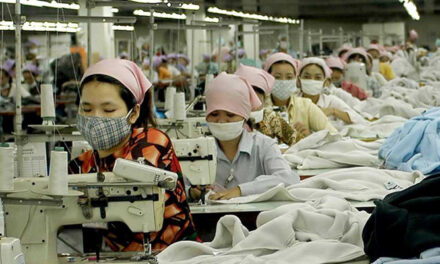
TEU in March was down only 0.7 percent YoY, according to the monthly Global Port Tracker report released by the National Retail Federation (NRF) and Hackett Associates. A TEU is one 20-foot-long cargo container or its equivalent.
“With proposed tariffs yet to be officially imposed, retailers are stocking up on merchandise that could soon cost considerably more,” NRF Vice President for supply chain and customs policy Jonathan Gold said. “If tariffs do take effect, there’s no quick or easy way to switch where these products come from. American families will simply be stuck paying higher prices and hundreds of thousands of US jobs could be lost.”
“Despite the threats and risks to trade, we continue to see solid expansion and our models are projecting this to continue throughout the year,” Hackett Associates Founder Ben Hackett said. “This is driven by a high level of confidence as the economy remains strong and unemployment is at its lowest level in nearly two decades.”
April was estimated at 1.73 mn TEU, up 6.4 per cent YoY. May is forecast at 1.82 mn TEU, up 4.3 per cent from last year; June also at 1.82 mn TEU, up 6.1 per cent; July at 1.9 mn TEU, up 5.5 per cent; August at 1.92 mn TEU, up 4.6 per cent, and September at 1.82 mn TEU, up 2.1 per cent, as per the report. The numbers forecast for July and August would each set new records for the number of containers imported in a single month, beating the previous high of 1.83 mn TEU in August 2017.
The first half of 2018 is expected to total 10.4 mn TEU, an increase of 5.8 per cent over the first half of 2017. The total for 2017 was 20.5 mn TEU, up 7.6 per cent from 2016’s previous record of 19.1 mn TEU. Global Port Tracker, which is produced for NRF by the consulting firm Hackett Associates, covers the US ports of Los Angeles/Long Beach, Oakland, Seattle and Tacoma on the West Coast; New York/New Jersey, Port of Virginia, Charleston, Savannah, Port Everglades, Miami and Jacksonville on the East Coast, and Houston on the Gulf Coast.

















